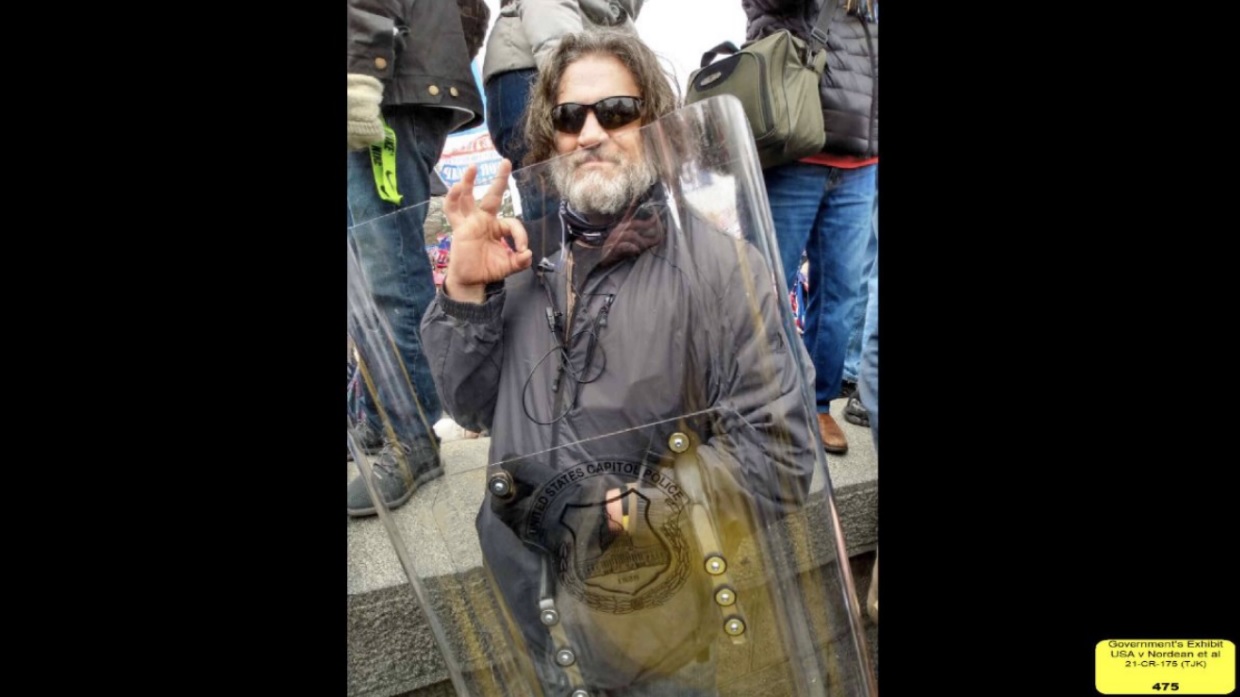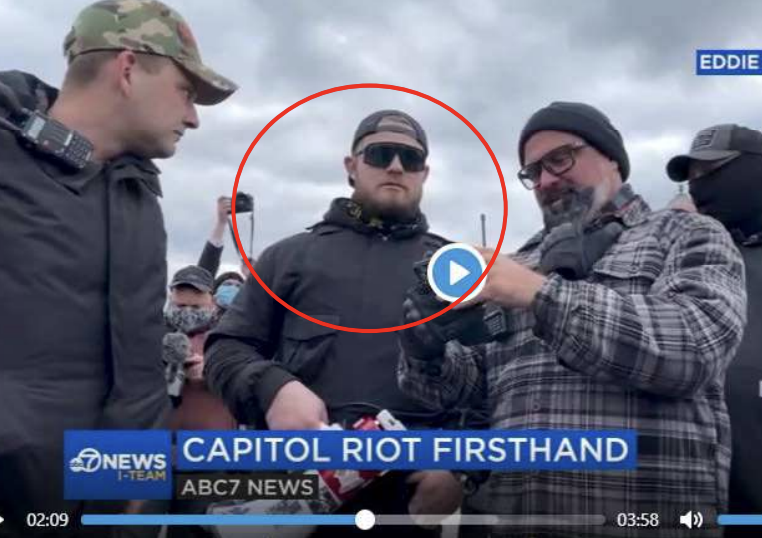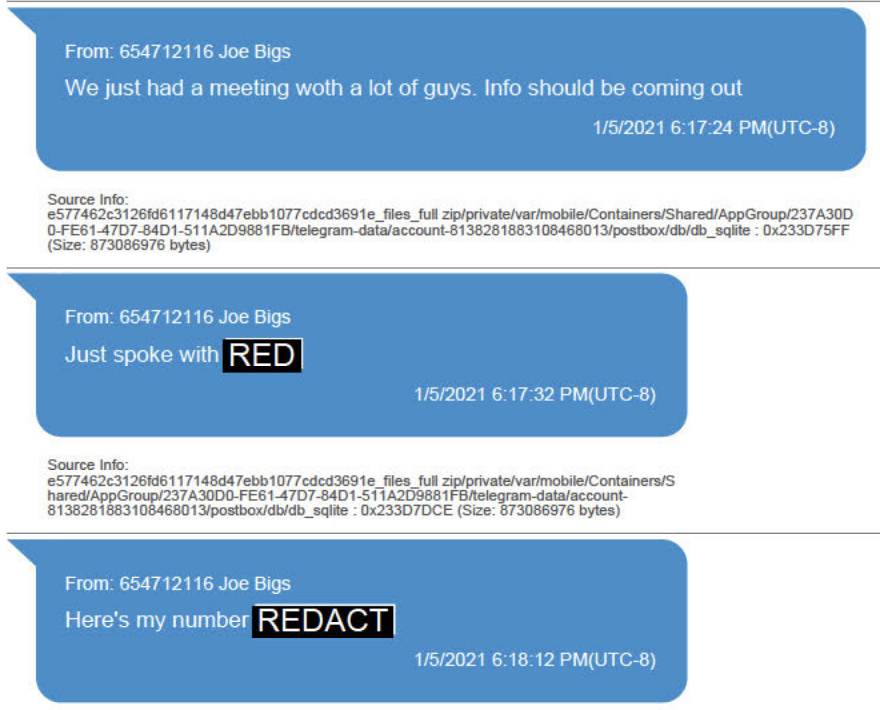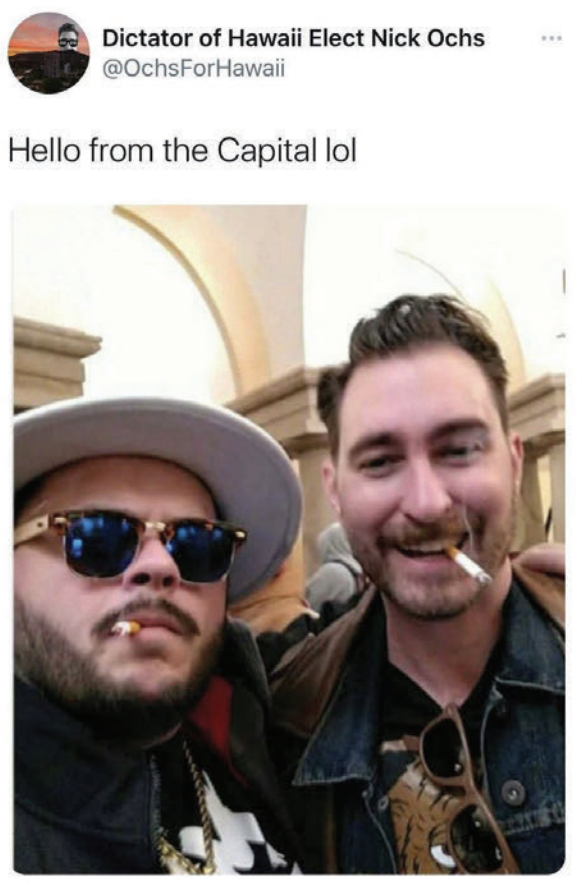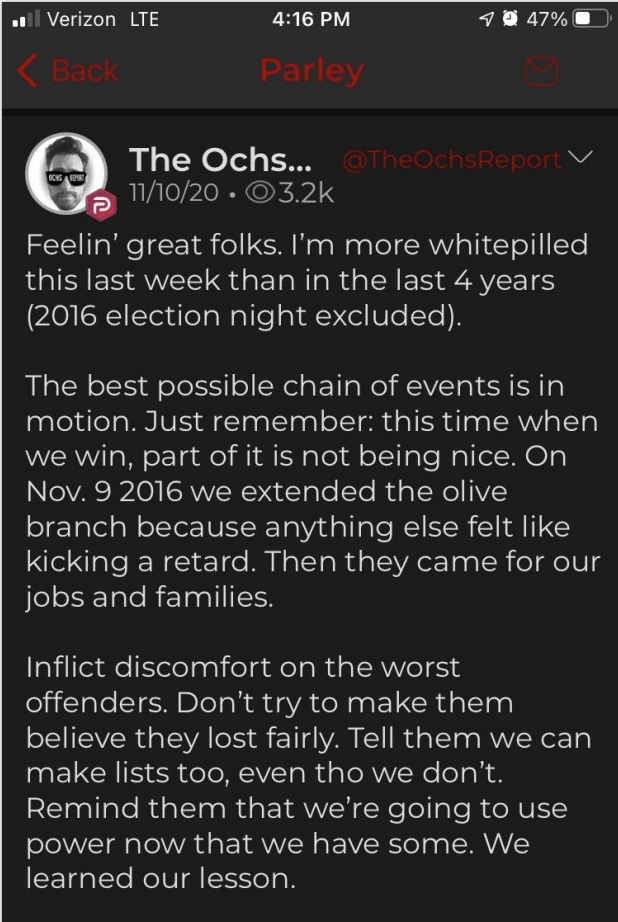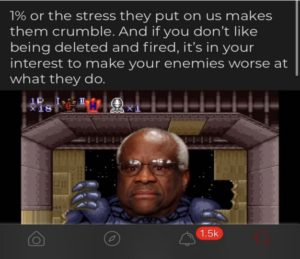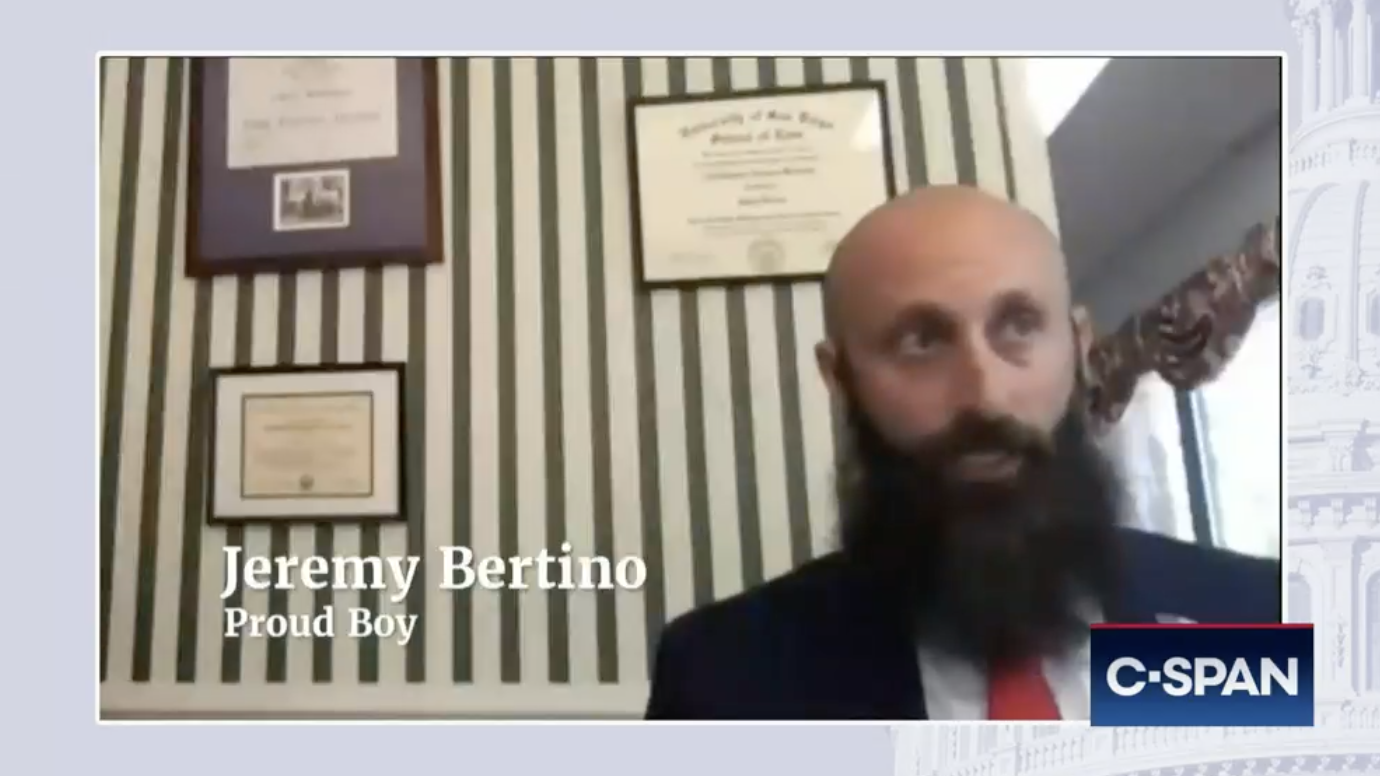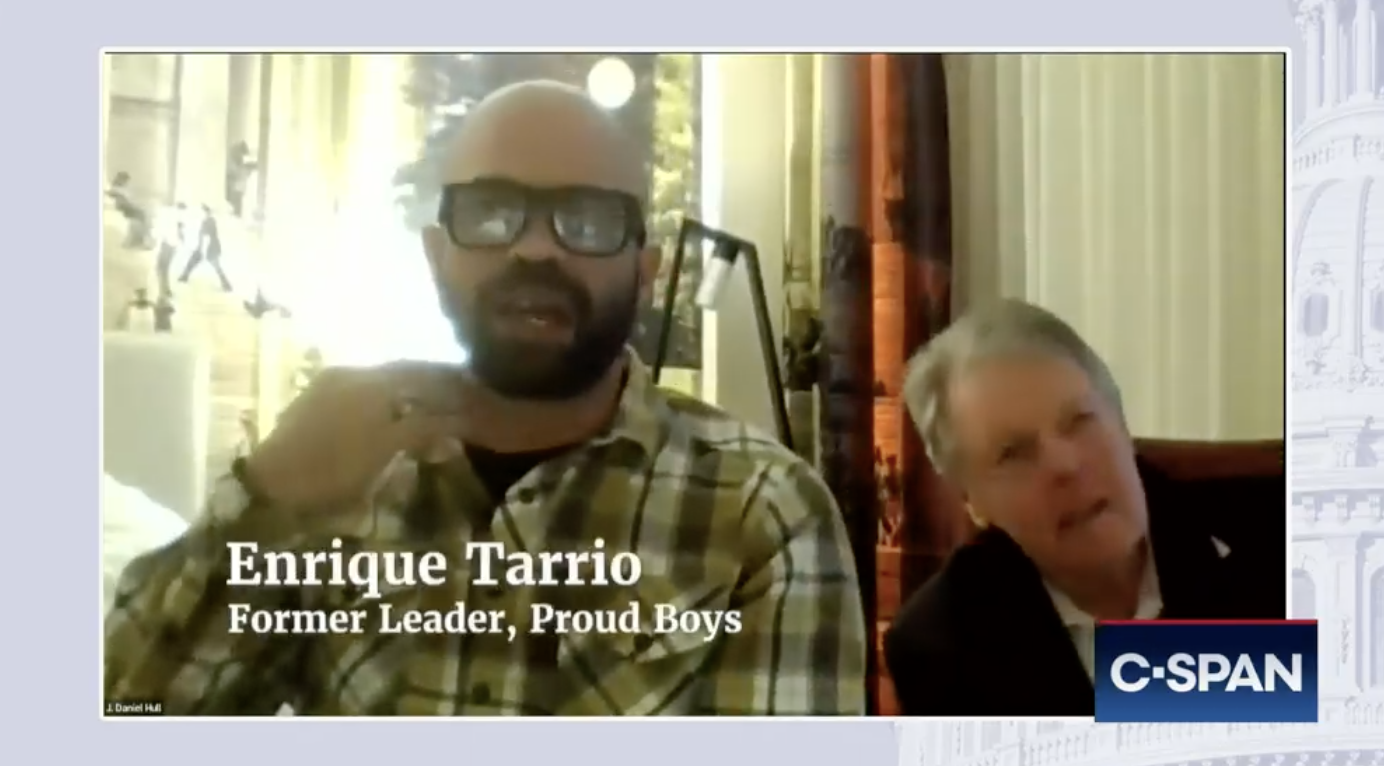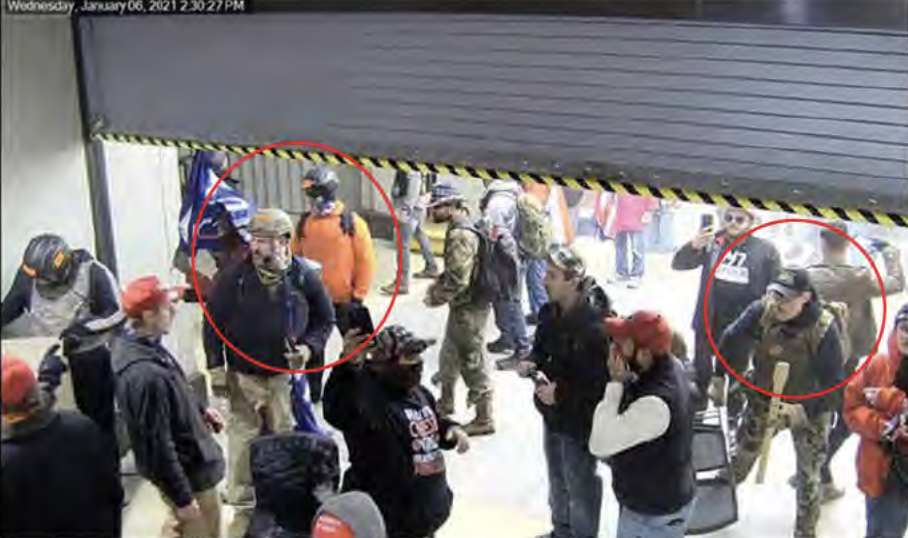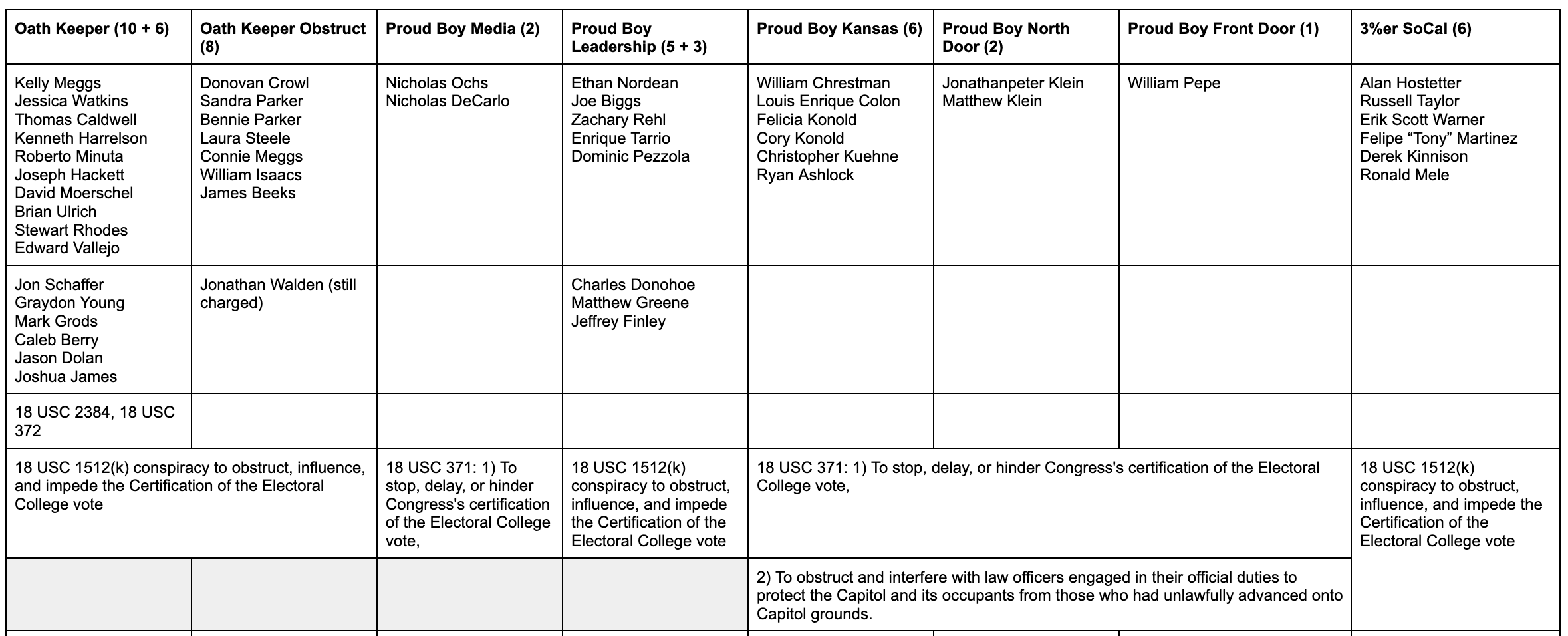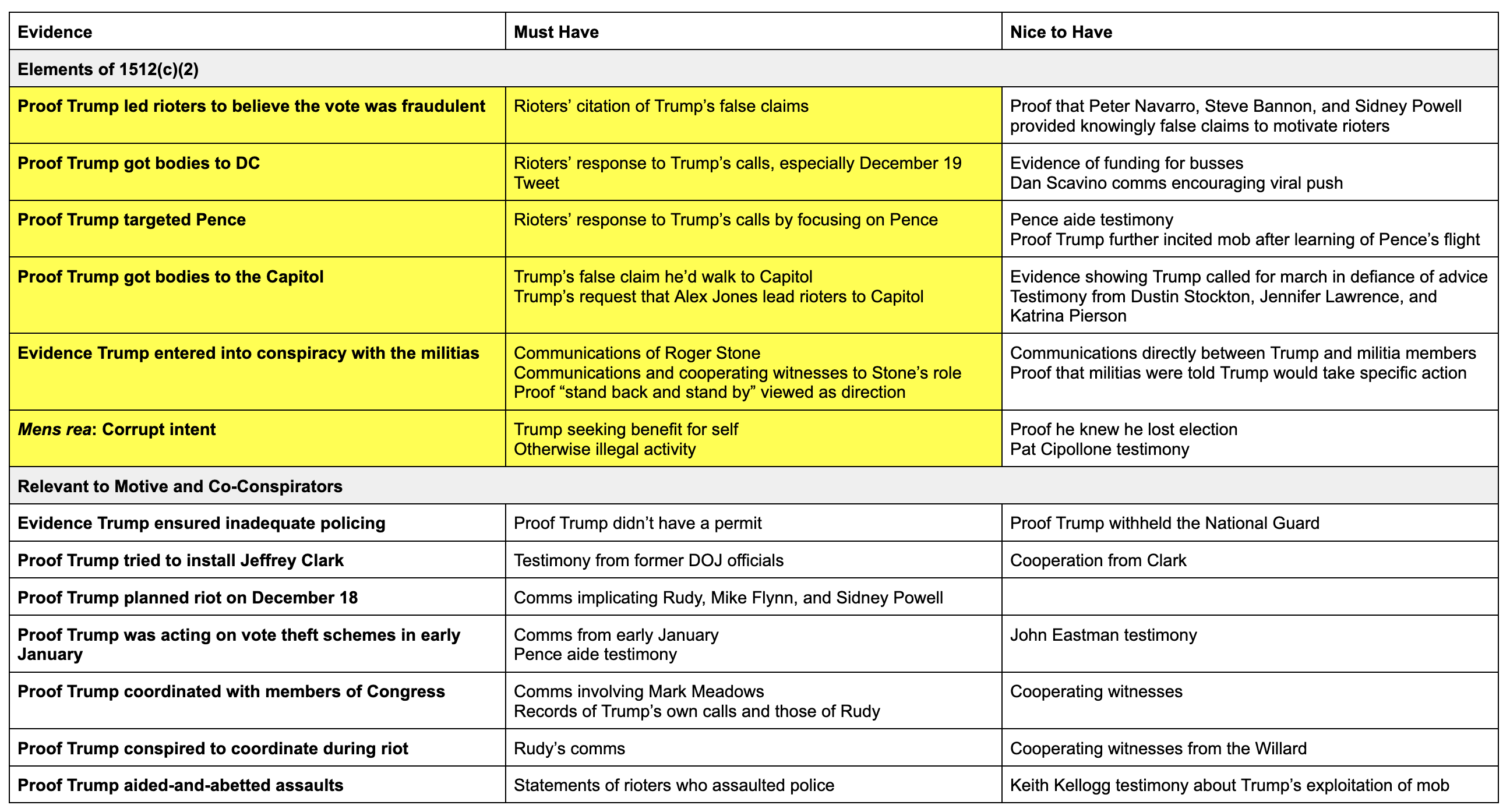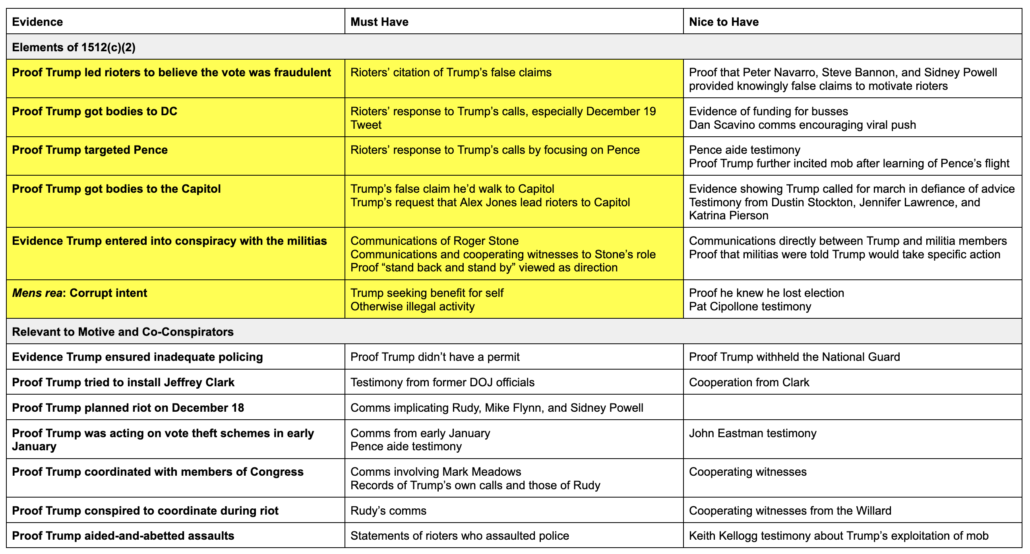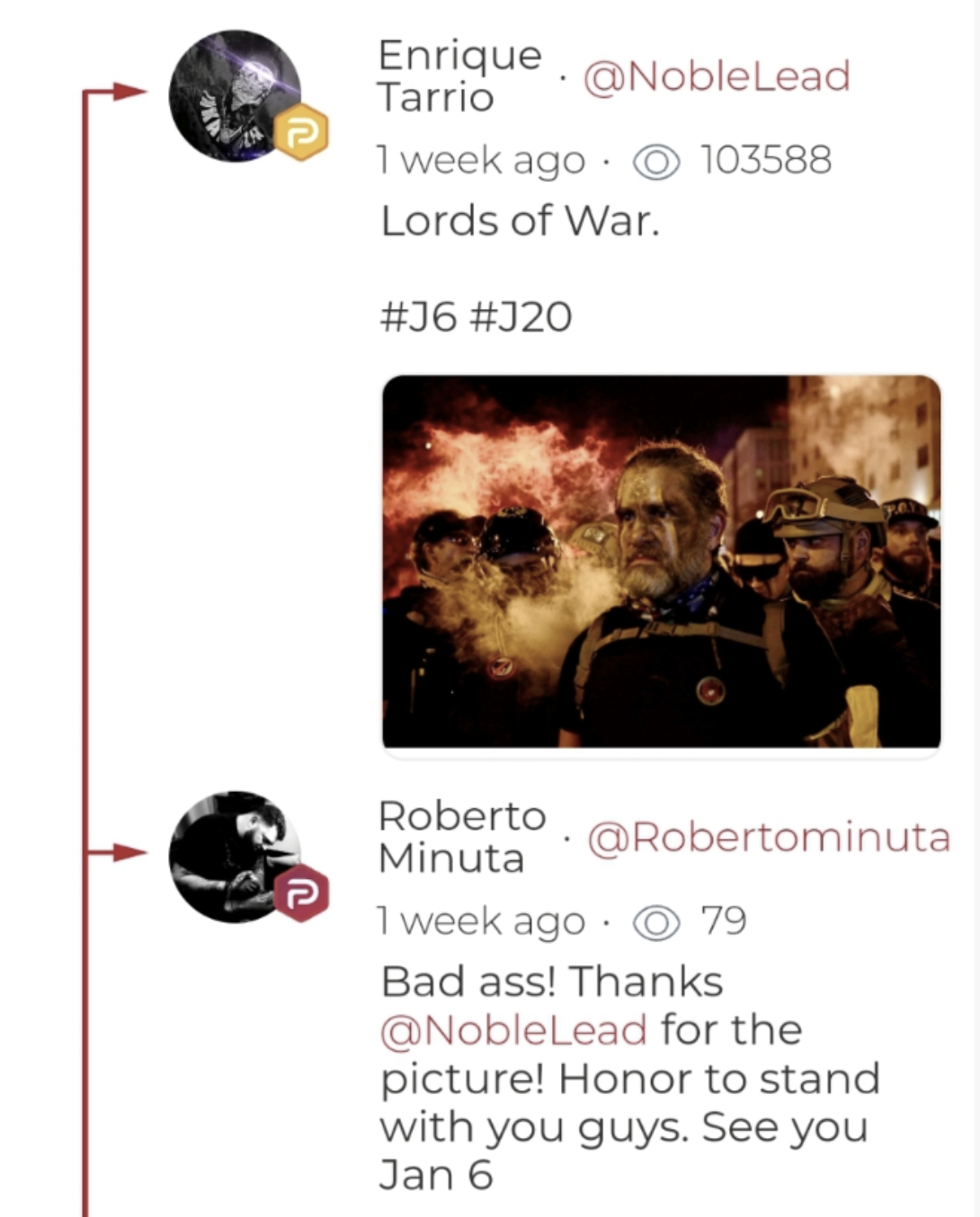As part of a renewed motion for bond for her client Zach Rehl, Carmen Hernandez released a copy of the “We the People” plan referenced in the indictments that include Enrique Tarrio. The document is disturbing and in some way reflects the plan to occupy the Capitol achieved during the insurrection on January 6. And it is evidence reflecting Tarrio’s — though not necessarily Rehl’s — motive. But it is not Tarrio’s plan.
We the People Plan
The plan itself consists of nine pages. The last two — intended for public consumption as a recruiting device — issue a demand for a new election on January 20, pledge fondness for Rand Paul and Ron DeSantis, and include a map.
The other seven pages lay out the plan to occupy Congressional office buildings and CNN but not the Capitol itself (one of the points Hernandez makes in her bond motion). The goal was to occupy the buildings with as “many people as possible inside these buildings” and then “present[] our demands in unity.”
The plan envisioned spending January 1 through 5, as well as on January 6 itself, recruiting as many participants as possible, using the public flier. Then, in advance of the attack on January 6, the buildings would be scouted by people wearing suits to blend in. For each building, the plan aspired to recruit a “covert sleeper” who would use a ruse to get inside the building and let others in, with a backup if the first person is discovered. This plan to have someone from the inside open doors to let others in does resemble something that happened on the East side of the Capitol, as Joe Biggs, the Oath Keepers, and the mob led there by Alex Jones all assembled in time for someone to open that door from inside.
The plan advocated using COVID masking to obscure identities (something none of the Proud Boys did, though one of Rehl’s co-travelers, as well as a few others, did a superb job of hiding his face via other means). It also proposed ways to distract by occupying other locations (like hotels and WalMart) and to block select roads in DC. There were conflicting chants — the same people who would chant “No Trump, No America” were also going to demand, “Free and fair elections,” which Trump lost. The plan advocating “sit[ting] in” key Senators’ offices, but then didn’t really understand what to do next.
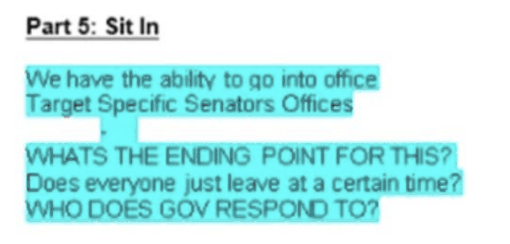
One area where the plan most closely matches the one ultimately implemented by the Proud Boys was in timing: The mob was supposed to meet at 1PM, then an assessment would be made at 1:22PM if “enough people are around?,” then at 1:30, “Wait for sign from lead, storm the building.” Compare that timeline to this one put together by the Sedition Hunters. Both, importantly, were tied to the vote certification, not Trump’s speech.
The plan appears to have been developed by one or another of the “patriot” groups, which were separate from but with which the Proud Boys had some ties (and, at least in the case of some “Patriots” from Texas, fundraising ties). DOJ has only charged individual pairs of such rioters with conspiracy, even though there was a larger network passing such plans back and forth.
But this was their plan, not the Proud Boys’ plan.
Zach Rehl’s disproportionate charging
And that’s one of the points that Hernandez made in the bond motion. Rehl — and the other charged defendants — had no awareness of the document (though that would not include Jeremy Bertino, who is not currently a charged defendant).
The document was never shared or otherwise discussed with Mr. Rehl. 1776 Returns was sent to Mr. Tarrio by a female acquaintance. Mr. Rehl does not know the woman who sent the document and has not had any conversations with her. The government has represented that Tarrio did not forward the document to Mr. Rehl or the other defendants. And that Tarrio did not discuss the document or its contents with Mr. Rehl and the other defendants.
As I’ll show below, in the government’s theory of the conspiracy, in which Tarrio was a hierarchical head of the militia, that may not matter. The government has accused Rehl of following Tarrio’s plan, not this one.
Hernandez makes another point I find much more persuasive, though. Rehl is included in a sedition conspiracy with Tarrio, the hierarchical leader, Joe Biggs and Ethan Nordean, the onsite leaders who discussed an orally agreed plan starting on January 5, and Dominic Pezzola, whose actions were absolutely crucial from a tactical standpoint. Compared to them, he did play a smaller role in the conspiracy. As conspiracies work legally, that doesn’t necessarily help him much at trial, but this is a bond motion, and it might.
Hernandez cites one of Rehl’s co-travelers, who include Isaiah Giddings, Brian Healion, and Freedom Vy, stating that Rehl wasn’t really in charge and they just entered the Capitol to take a peak.
After the initial breach, [defendant] was with Zach [and two others]. [They] wanted to “go in and take a peek” and that they made the decision to enter the Capitol Building as a group. [Defendant] was curious as to what was going on inside the CapitolBuilding. . . . They left the building as a group.”
It’s true that these three men have, thus far, just been charged with a misdemeanor. But after Hernandez filed this filing yesterday, the prosecutor in their case, Alexis Loeb, filed for a continuance so prosecutors could continue to discuss a pre-charging resolution with these defendants.
The parties therefore request a 69-day continuance to allow defense counsel to continue their review of the discovery in this case. The requested continuance will also allow the government to continue to make progress providing additional discovery and continue discussions potential pre-charging resolution of this matter.
Hernandez also cites Jeff Finley’s treatment, who was with Rehl for part of the day (Hernandez refers to Finley having a cooperation agreement, which may confirm something that was fairly clear from his treatment).
By his own admission, on January 6, Finley marched with the Proud Boys from the start and participated and posted on the Boots on the Ground telegram chat. Id. (ECF 38) at ¶ 8. Finley watched as the barricades were torn down; after the crowd overran law enforcement, he followed the crowd onto the west terrace of the Capitol; and also invited other members of his chapter to join him at the Capitol. During these events, Finley 8 posed for a photograph with Mr. Rehl and three other Philadelphia Proud Boys “on the Upper West Terrace of the U.S. Capitol during the breach.” 9
After entering the Capitol and observing barricades torn down and the crowd overrunning law enforcement, Finley posted a video message, which among other things celebrated the events of the day and congratulated Mr. Rehl (“Yo, [Zach Rehl], proud of your (sic) fucking boy”). Finley (ECF 38) at ¶ 23. Finley deleted social media posts and photographs of himself and other Proud Boys at the Capitol and directed members of his chapter to do the same. Id. Despite almost identical 10 conduct by Finley and notwithstanding the allegations that Finley obstructed justice by deleting and directing members of his chapter to delete posts, the government did not consider Finley a risk of danger and did not seek his detention pretrial.
10 “Following the events at the Capitol on January 6, 2021, Finley took measures to obstruct the government’s investigation into criminal conduct at the Capitol. Among other things, Finley deleted his social media accounts and deleted photos and videos of himself and other Proud Boys at the Capitol. Finley also directed members of his chapter to delete their photographs and advised the presidents of other Proud Boys chapters of his actions, writing in an encrypted message, “Deleted all photos I may have had, advised my boys to as well. No talks about dc on telegram whatsoever and gathering #s as we speak.” Finley (ECF 38) at ¶ 24
According to Hernandez, the single thing that distinguishes Rehl from Finley is that Rehl was a member of the Ministry of Self Defense that Tarrio created in December 2020 as a leadership structure for what came next. She argues, in defiance of years of Proud Boy modus operandi, that the group was formed to avoid violence (rather than to better to incite it from others). And several things she cites actually hurt her argument. She cites Tarrio’s demand for a top-down structure, for example.
Now that goes with the whole thing. I don’t want this – this isn’t a foke (phonetic) thing. This isn’t a fuckin’, a thing where it’s going to be a fuckin’ super militant fuckin’ thing, but we do need to organize better and in order to do that, we need to have a top down structure, right.
She makes much of Tarrio’s demand that the Proud Boys will not, henceforth, be the ones to cross police barricades.
MR. TARRIO: Yeah, I mean every situation calls for something different, you know. Like we’re – I think on the verbalsense and the media sense, me and Biggs has got in on lock, where we know exactly what we’re going to say that will piss off the media. And you can translate that to on the grounds. Now I’m not saying, now I’m not saying to go ahead and fuckin’ talk shit. Go ahead and talk shit, as long as it, you know, keep it fuckin’ professional. But we’re never going to be the ones to cross the police barrier or cross something in order to get to somebody. We’re always going to be the ones standing back, right, and we’re always going to be the ones to fuckin’ defend. [Hernandez’ emphasis]
The Proud Boys weren’t the ones who crossed the barricade first on January 6. Instead, Joe Biggs made some comments to Ryan Samsel, and Samsel pushed over the barricades, giving Officer Caroline Edwards a lasting brain injury in the process and setting off hundreds of people behind him.
And Hernandez points to Bertino’s warnings (whom she names in a piece that also describes that Person-1 is the guy who, like Bertino, got stabbed at an earlier Proud Boy fight) about being stabbed to excuse the body armor the Proud Boys wore on a day when they targeted the Capitol at a time when few if any Antifa were present.
There’s a long redacted passage that, she explains, “refute the allegation that … MOSD planned a violent attack on the Capitol.”
Matters considered by the Court under seal also refute the allegation that the Proud Boys and the MOSD planned a violent attack on the Capitol.
This seems to be a reference to one of, if not the primary extended sealed dispute in this docket before Judge Kelly. Given Hernandez’ description of it, it may be the testimony of an FBI informant who repeatedly denied any such plans. Except that informant went to insurrection with the Kansas City cell of Proud Boys, and two of them — Louis Colon and Ryan Ashcroft — have since pled guilty to statements of offense that seem to directly counter the claims of their co-traveler.
Finally, Hernandez presents what is solid evidence that Rehl was not part of the planning discussions that did go on between Tarrio, Biggs, and Nordean, but which is not evidence that there was no plan.
That was the only plan communicated to the MOSD, to Boots-on-the-Ground and to Mr. Rehl. See also TSI at ¶¶ 63-65; Donohoe Plea (ECF 336 at ¶¶ 22-24). Note also that Mr. Rehl’s understanding of the plan was, as discussed in the 12/30 MOSD meeting, to break off into smaller teams. Mr. Rehl was not with Biggs and Nordean on the evening of January 5 and Tarrio was not in DC. Mr. Rehl did not speak with Tarrio by phone on January 5 or January 6. Compare TSI at 22 ¶¶ 63, 105. Thus, any communications between Mr. Rehl and Biggs, Nordean, or Tarrio on January 5, would have been on telegram. No message exists where they discuss a plan to attack the Capitol.
There was a meeting on January 5 involving Biggs and Nordean, after which Biggs explained that he had a plan that had been discussed with Tarrio. Rehl was not in that loop (and indeed had only just made it to DC). But there are repeated references to this plan.
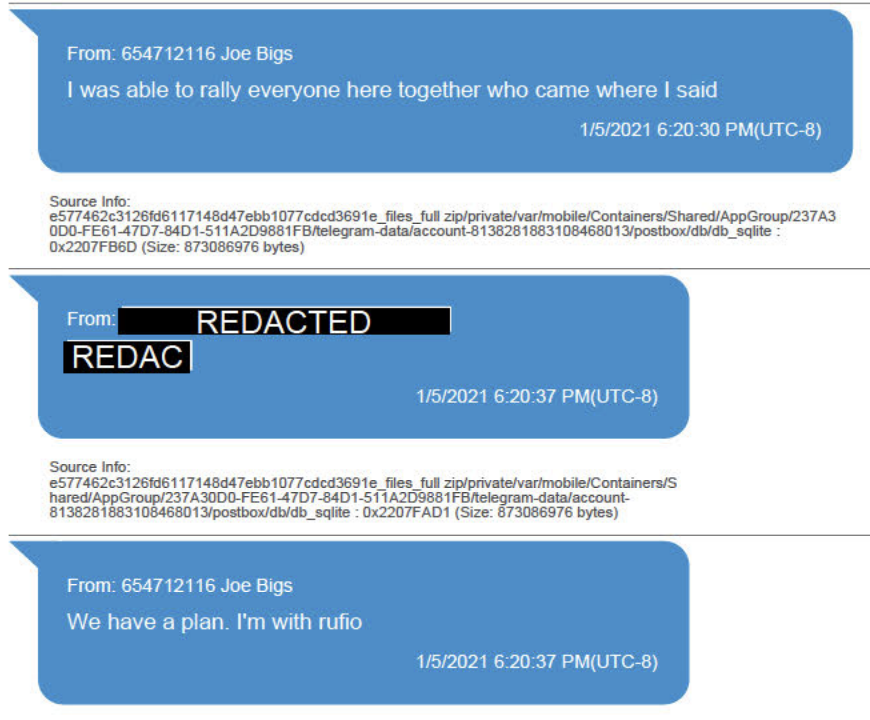
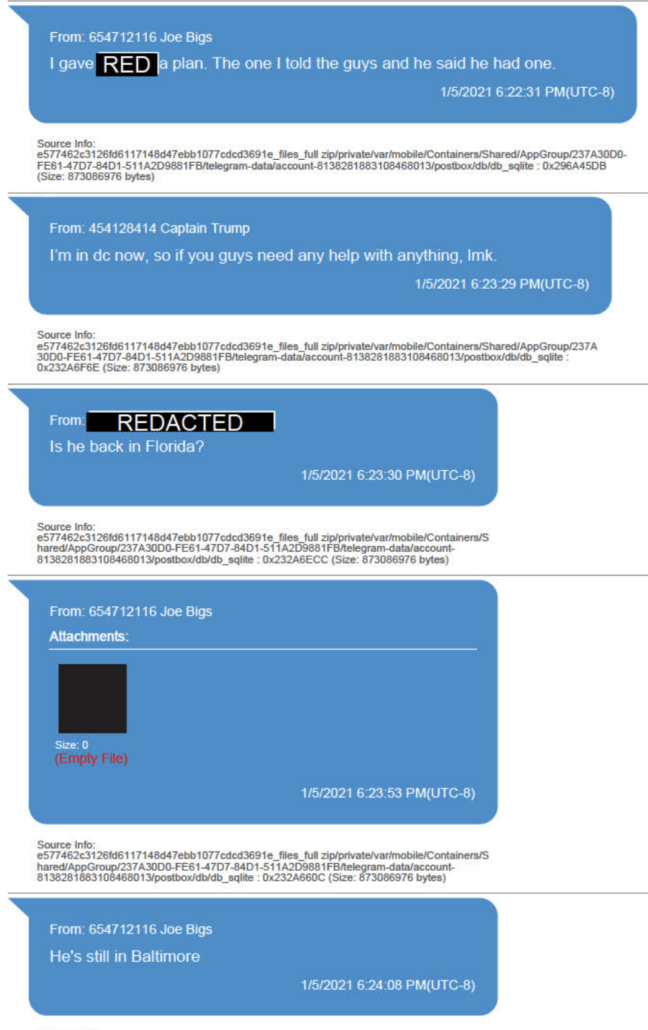
I lay all this out for two reasons. First, probably because of some difficulties with the prosecution (including the number of Proud Boy informants, including Joe Biggs, that the FBI took to be credible and so got lied to), DOJ’s prosecutorial decisions don’t make transparent sense in the way they do with the Oath Keeper conspiracy, which has been a relentless march towards more senior plotters. But also because, at least according to the government’s theory of how this worked (which does appear in both Matthew Greene and Charles Donohoe’s statements of offense), this attack was implemented using a top-down structure led by a guy, Tarrio, giving oral instructions from offsite. And those oral instructions may have been influenced by the plans of others that Tarrio was known to be in contact with in December, only one of which is this “We the People” plan.
Tarrio’s motive and plan
And that’s why, I would argue, the “We the People” document is in the existing conspiracy indictments. It led Tarrio to express his own motive twice. The sedition indictment has two references to it. First, in regards to discussions Tarrio had with the woman who shared it with him in December, well before the Proud Boy plan was finalized.
41. Between December 30 and December 31, 2020, TARRIO communicated multiple times with an individual whose identity is known to the grand jury. On December 30, 2020, this individual sent TARRIO a nine-page document tiled, “1776 Returns.” The document set forth a plan to oceupy a few “crucial buildings” in Washington, D.C., on January 6, including House and Senate office buildings around the Capitol, with as “many people as possible” to “show our politicians We the People are in charge.” After sending the document, the individual stated, “The revolution is important than anything.” TARRIO responded, “That’s what every waking moment consists of… I’m not playing games.”
To her (using a phone Tarrio believed would not be exploited, and which did take a year to be exploited), he agreed that “the revolution is [sic] important than anything,” Tarrio seemingly agreed that “every waking moment” he spent was dedicated to that revolution.
Then, after an attack led by the Proud Boys (who had succeeded in recruiting others to break through the barricades) Tarrio made a reference that suggests Bertino — referred to here as Person-1 — does know about this plan.
107. At 7:39 pm, PERSON-I sent two text messages to TARRIO that read, “Brother. ‘You know we made this happen,” and “I’m so proud of my country today.” TARRIO responded, “I know” At 7:44 pm. the conversation continued, with PERSON-I texting, “1776 motherfuckers.” TARRIO responded, “The Winter Palace.” PERSON-1 texted, “Dude. Did we just influence history?” TARRIO responded, “Let’s first see how this plays out.” PERSON-1 stated, “They HAVE to certify today! Or it’s invalid.” These messages were exchanged before the Senate returned to its chamber at approximately 8:00 p.m. to resume certifying the Electoral College vote.
In response to Bertino’s boast of 1776, Tarrio responded with the code for occupying buildings, Winter Palace. That is, this seems to be his tacit reference to the plan to occupy buildings.
But this exchange goes well beyond that of the We the People plan, which imagined issuing a set of demands but didn’t know what would happen next. This occupation, as reflected by Bertino’s awareness that “They HAVE to certify today! Or it’s invalid,” reflects some knowledge of the entire legal theory espoused by people like John Eastman: that to succeed in winning their demands, occupiers needed to ensure that the certification did not happen as scheduled.
Rehl has a point (though prosecutors, being prosecutors, would note that it’s the same point that Donohoe, who only came to DC on January 6 to fill in for Tarrio after the Proud Boy leader predictably got arrested and so retreated to Baltimore for the actual violence) came to: that Tarrio set up this conspiracy to insulate himself, leaving people like Donohoe and Rehl to take the fall for his plan.

